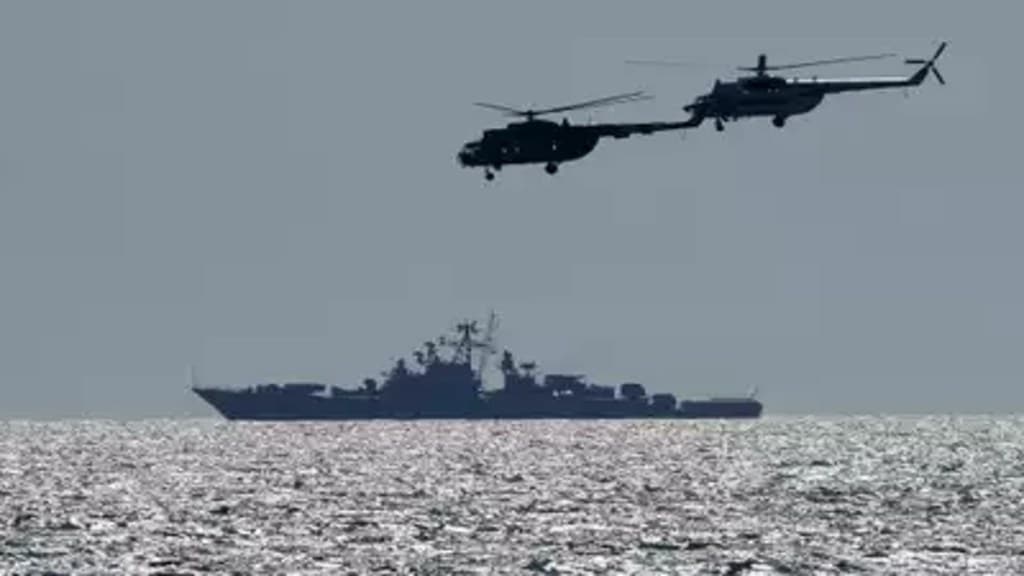The Indo-Pacific, has emerged as a central force in reshaping global geopolitics, says Chief of the Indian Navy Admiral Dinesh K Tripathi.
In his keynote address at the India Defence Conclave, hosted by BharatShakti, on “Indo-Pacific Futures: Navigating the New Normal” he focused on India’s evolving maritime approach. He highlighted how the shifting global landscape impacts the Indo-Pacific, described the region’s new geopolitical challenges, and highlighted India’s strategic responses through its nav
Defining the Indo-Pacific’s ‘New Normal’
Admiral Tripathi defined the ‘new normal’ as a state of flux across the global order, with the Indo-Pacific at the forefront of change. He noted that the region is characterized by a complex interplay of competition, cooperation, and conflict, particularly in the maritime domain. He remarked, “The Indo-Pacific is increasingly characterised by the turbulent tides of competition, contestation and conflict co-existing with cooperation, collaboration and convergence.”
Several global developments frame the Indo-Pacific’s challenges. In the west, he pointed to the prolonged conflict in Europe, which has shattered the illusion of quick military engagements. To the east, he underscored the growing instability in the South China Sea, where stronger nations undermine smaller states’ sovereignty. Tripathi described these actions as a troubling pattern of “belligerent bullying” aimed at advancing expansionist goals. Meanwhile, conflicts in West Asia and increasing maritime threats, including piracy and the use of low-cost unmanned technologies, continue to destabilize the region, posing significant challenges to global maritime security.
The southern Indian Ocean, although relatively peaceful, remains susceptible to the evolving threats that plague the wider region. Non-traditional and transnational challenges, such as arms trafficking, terrorism, and climate-related security risks, further complicate the security environment. Admiral Tripathi captured this transformation with the term “weaponisation of everything,” indicating a world increasingly marred by constant, low-intensity conflicts and the blurring of lines between peace and war.
India’s Maritime Strategy
In response to these evolving challenges, India has charted a comprehensive maritime strategy. Admiral Tripathi noted, “India’s vision of a ‘free, open, inclusive, and prosperous Indo-Pacific’ is founded on the principles of peaceful coexistence, respect for sovereignty, and dialogue over conflict.” This vision is best embodied by the Indian Navy’s role as the first responder and preferred security partner in the region, guided by Prime Minister Narendra Modi’s SAGAR (Security and Growth for All in the Region) doctrine.
India’s approach to ensuring maritime security has focused on strategic deployments and active participation in regional affairs. During the Red Sea Crisis, for example, Indian naval units successfully responded to multiple incidents involving drone and missile attacks, piracy, and hijacking. These efforts safeguarded over 350 mariners and protected billions of dollars in cargo. According to Admiral Tripathi, the Indian Navy’s actions are a testament to India’s commitment to a “free, open and inclusive maritime commons.”
However, as Tripathi acknowledged, no single navy can shoulder these responsibilities alone. The complexity of challenges in the Indo-Pacific necessitates collaborative efforts. The Indian Navy has taken a multifaceted approach that includes joint patrols, coordinated exercises, capacity building, and technological partnerships. For instance, India has strengthened ties with key partners through functional groupings such as the Quad and regional platforms like the Indian Ocean Naval Symposium (IONS). These initiatives foster cooperation and enhance the collective security of the Indo-Pacific.
Enhancing Maritime Capabilities and Self-Reliance
India recognizes that to be a credible maritime power, it must enhance its naval capabilities. Admiral Tripathi articulated a vision of a “Combat Ready, Credible, Cohesive and Future Ready Navy,” emphasizing the need to expand India’s capabilities across multiple domains—space, air, surface, subsurface, and cyber. He also highlighted the Indian Navy’s commitment to achieving self-reliance in niche and emergent technologies, as part of a broader strategy to avoid dependency on external sources for critical defense needs.
By 2047, the Indian Navy aims to be fully self-reliant (Aatmanirbhar), with a focus on integrating joint research and development partnerships to improve interoperability with other nations. “Self-reliance is now no longer merely an economic imperative but a strategic necessity,” Tripathi declared, underscoring the importance of shared technologies in overcoming shared challenges.
The Path Ahead for a Secure Indo-Pacific
In his concluding remarks, Admiral Tripathi reaffirmed that India’s maritime strategy in the Indo-Pacific is based on strengthening collaboration, enhancing maritime diplomacy, and promoting a rules-based order. As he aptly stated, “Our strategic choices today will define the contours of the Indo-Pacific tomorrow.” The future of the Indo-Pacific, according to India’s strategic vision, will be shaped by collective efforts, where the seas are not only routes for economic growth but the foundation for regional stability.
India’s proactive stance, bolstered by a capable and forward-looking navy, aims to contribute to a stable and secure Indo-Pacific, ensuring that the region can navigate its future with confidence amidst the uncertainties of the ‘new normal.’

